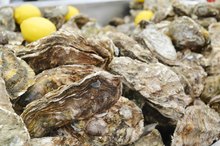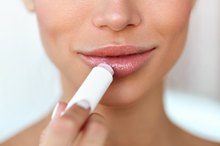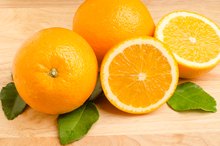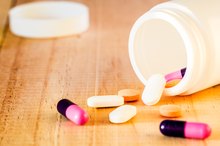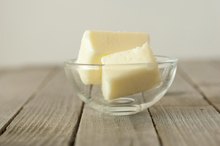Retinol Rich Foods
Vitamin A is a fat-soluble vitamin involved in promoting vision, strong bones and healthy skin. Vitamin A from animal products is known as preformed vitamin A and is absorbed as retinol. Retinol is the active form, or the most usable form of vitamin A. The body can also convert retinal and retinoic acids, compounds found in carotene, into retinol. Retinol is abundant in most animal products.
Milk
Milk is a rich source of vitamin D, calcium and vitamin A. The amount of retinol in milk is affected by the fat content; the higher the fat, the lower the vitamin A. One cup of whole milk has 227 International Units of retinol, a 1 cup serving of 2 percent milk has 447 International Units and 1 cup of nonfat milk has 497 International Units of retinol. In addition, milk may come fortified with vitamin A, meaning that product has extra retinol.
Meat and Poultry
List of Antioxidant Vitamins
Learn More
Retinol is found in meat and poultry in varying amounts. These foods are also good sources of protein, B vitamins, iron, vitamin E, vitamin D, zinc and vitamin A. A 3.5 ounce serving of beef liver provides 545 International Units of retinol. A 3.5 ounce serving of duck has 210 International Units of vitamin A and a 3.5 ounce serving of chicken contains 201 International Units of retinol.
Cheese
The retinol content of cheese varies depending upon the kind. A 4 ounce serving of cottage cheese made from 2 percent milk fat contains 84 International Units of retinol. Similarly, a 4 ounce serving of cheddar cheese is equivalent to 566 International Units of retinol. Three ounces of cream cheese has 1075 International Units of retinol while there are 1164 International Units of retinol in 4 ounces of semi soft goat cheese.
Fish
What Foods Have Zinc and Cobalt in Them?
Learn More
Fish, including tuna, mackerel, trout, herring, cod and salmon, are rich sources of the essential omega-3 fatty acids and protein. These types of fish are also sources of vitamin A. For example, a 3.5 ounce serving of tuna contains 2,520 International Units of retinol while 1 tsp. of cod liver oil has 4,500 International Units of retinol.
Dairy Products
Yogurt, sour cream, eggs and egg substitutes, whipping cream and butter are rich in vitamin D, calcium and vitamin A. One cup of plain, full fat yogurt is equivalent to 243 International Units of retinol while 1 cup of low-fat yogurt contains 125 International Units of retinol and a 3.5 ounce serving of sour cream contains 623 International Units of retinol. One ounce of half and half cream has 107 International Units of vitamin A and 1 ounce of whipping cream has 438 International Units of retinol. One large egg has approximately 300 International Units of retinol while 1/4 cup of egg substitute contains 226 International Units of vitamin A. One tablespoon of butter has 317 International Units of retinol.
Fruits and Vegetables
Vitamin A is available in two forms, retinol and beta-carotene. Retinol is found in animal products and beta-carotene in fruits and vegetables. Retinol is the most readily absorbed form of vitamin A. While beta-carotene is not as readily absorbed, it can be converted into retinol within the body. Pumpkin, tomato, melon, kale, broccoli, mango, grapefruit, papaya, guava, carrots, spinach, peppers and squash are a few examples of foods rich in the beta-carotene form of vitamin A.
Related Articles
References
Writer Bio
Erica Wickham covers health, exercise and lifestyle topics for various websites. She completed an internship in dietetics and earned a Master of Science in dietetics from D’Youville College in Buffalo, N.Y. Wickham now serves as a registered dietitian.

